best Frank Sinatra songs (A-Z) ↓↓↓

Scroll down and discover the best Frank Sinatra songs (A-Z)!
We've meticulously organized our extensive library for your convenience. Explore best Frank Sinatra songs sorted by popularity to easily find the tracks that resonate most with listeners, or browse through our alphabetical (A-Z) listing to discover hidden gems and classic favorites alike. Whether you’re a long-time fan or new to Frank Sinatra music, there’s something for everyone to enjoy.
♫Frank Sinatra
Best Frank Sinatra songs
- 1 My Way
- 2 Fly Me To The Moon
- 3 Strangers In The Night
- 4 New York, New York
- 5 Besame Mucho
- 6 Moon River
- 7 Something Stupid
- 8 Blue Moon
- 9 White Christmas
- 10 Have Yourself A Merry Little Christmas
- 11 New York, New York (from ’on The Town’)
- 12 Shadow Of Your Smile
- 13 (i Offer You The Moon) Senorita
- 14 A Baby Just Like You
- 15 Agua De Beber
- 16 That’s Life
- 17 Begin The Beguine
- 18 April In Paris
- 19 All The Way
- 20 Cheek To Cheek
- 21 The Shadow Of Your Smile
- 22 All Of Me
- 23 The Way You Look Tonight
- 24 A Fine Romance
- 25 Autumn In New York
- 26 Again
- 27 A Foggy Day
- 28 You’ll Never Walk Alone
- 29 A Day In The Life Of A Fool
- 30 All My Tomorrows
A-Z songs of Frank Sinatra (1267)
- ♫ (i Offer You The Moon) Senorita
- ♫ (once Upon) A Moonlight Night
- ♫ (there’ll Be A) Hot Time In The Old Town Of Berlin
- ♫ (we’ve Got A) Sure Thing
- ♫ A Baby Just Like You
- ♫ A Cottage For Sale
- ♫ A Day In The Life Of A Fool
- ♫ A Dreamer’s Holiday
- ♫ A Fellow Needs A Girl
- ♫ A Fine Romance
- ♫ A Foggy Day
- ♫ A Friend Of Yours
- ♫ A Garden In The Rain
- ♫ A Good Man Is Hard To Find
- ♫ A Hundred Years From Today
- ♫ A Kiss Goodnight
- ♫ A Little In Love
- ♫ A Little Learnin’ Is A Dangerous Thing (part 1)
- ♫ A Little Learnin’ Is A Dangerous Thing (part 2)
- ♫ A Long Night
- ♫ A Lovely Way To Spend An Evening
- ♫ A Lover Is Blue
- ♫ A Man Alone
- ♫ A Nightingale Sang In Berkeley Square
- ♫ A Sinner Kissed An Angel
- ♫ A Tree In The Meadow
- ♫ A Wing And A Prayer
- ♫ Accentuate The Positive
- ♫ Accidents Will Happen
- ♫ Adelaid, Adelaide
- ♫ After I Say I’m Sorry
- ♫ After You’ve Gone
- ♫ Again
- ♫ Agua De Beber
- ♫ Ain’t She Sweet
- ♫ Ain’t She Sweet?
- ♫ Ain’tcha Ever Coming Back
- ♫ All Alone
- ♫ All I Need Is The Girl
- ♫ All My Tomorrows
- ♫ All Of Me
- ♫ All Of You
- ♫ All Or Nothing At All
- ♫ All The Things You Are
- ♫ All The Way
- ♫ All The Way Home
- ♫ All This And Heaven Too
- ♫ Almost Like Being In Love
- ♫ Along The Navajo Trail
- ♫ Always
- ♫ America The Beautiful
- ♫ American Beauty Rose
- ♫ Among My Souvenirs
- ♫ Amor
- ♫ An Affair To Remember
- ♫ An Old Fashioned Christmas
- ♫ And Then You Kissed Me
- ♫ Angel Eyes
- ♫ Any Time At All
- ♫ Anything
- ♫ Anything Goes
- ♫ Anytime (i’ll Be There)
- ♫ Anytime, Anywhere
- ♫ April In Paris
- ♫ April Played A Fiddle
- ♫ April Showers
- ♫ Are You Lonesome Tonight
- ♫ Aren’t You Glad You’re You
- ♫ Around The World
- ♫ As Long As There Is Music
- ♫ As Time Goes By
- ♫ As You Desire Me
- ♫ At Long Last Love
- ♫ At Sundown
- ♫ Autumn In New York
- ♫ Autumn Leaves
- ♫ Available
- ♫ Avalon
- ♫ Azure—te
- ♫ Baby, Won’t You Please Come Home
- ♫ Bad Bad Leroy Brown
- ♫ Bali Ha’i
- ♫ Bang Bang (my Baby Shot Me Down)
- ♫ Barbara
- ♫ Baubles Bangles And Beads
- ♫ Be Careful, It’s My Heart
- ♫ Beer Barrel Polka
- ♫ Begin The Beguine
- ♫ Bein’ Green
- ♫ Besame Mucho
- ♫ Between The Devil And The Deep Blue Sea
- ♫ Bewitched
- ♫ Bim Bam Baby
- ♫ Blame It On My Youth
- ♫ Blue Hawaii
- ♫ Blue Lace
- ♫ Blue Moon
- ♫ Blue Room
- ♫ Blue Skies
- ♫ Blues In The Night
- ♫ Blues In The Night (my Mama Done Tol’ Me)
- ♫ Body And Soul
- ♫ Bonita
- ♫ Bop! Goes My Heart
- ♫ Born Free
- ♫ Boys And Girls Like You And Me
- ♫ Brazil
- ♫ But Beautiful
- ♫ But None Like You
- ♫ But Not For Me
- ♫ Button Up Your Overcoat
- ♫ Buy A Piece Of The Peace
- ♫ By The Time I Get To Phoenix
- ♫ Bye Bye Baby
- ♫ Bye Bye Blackbird
- ♫ C’est Magnifique
- ♫ California
- ♫ Call Me
- ♫ Call Me Irresponsible
- ♫ Call Of The Canyon
- ♫ Can I Steal A Little Love?
- ♫ Can’t Get Out Of This Mood
- ♫ Can’t We Be Friends
- ♫ Can’t You Just See Yourself?
- ♫ Candy
- ♫ Careless Hands
- ♫ Castle Rock
- ♫ Catana
- ♫ Change Partners
- ♫ Charmaine
- ♫ Chattanoogie Shoe Shine Boy
- ♫ Cheek To Cheek
- ♫ Cherry Pies Ought To Be You
- ♫ Chicago
- ♫ Chickery Chick
- ♫ Christmas Dreaming (a Little Early This Year)
- ♫ Christmas Memories
- ♫ Ciribiribin
- ♫ Civilization
- ♫ Close To You
- ♫ Come Back To Me
- ♫ Come Back To Sorrento (torna A Surriento)
- ♫ Come Blow Your Horn
- ♫ Come Dance With Me
- ♫ Come Fly With Me
- ♫ Come Out, Come Out, Wherever You Are
- ♫ Come Rain Or Come Shine
- ♫ Come Up To My Place
- ♫ Come Waltz With Me
- ♫ Comin’ In On A Wing And A Prayer
- ♫ Comme Ci Comme Ca
- ♫ Could’ja?
- ♫ Count On Me
- ♫ Cradle Song
- ♫ Crazy
- ♫ Crazy Love
- ♫ Cycles
- ♫ Dames, Dames
- ♫ Dance Ballerina Dance
- ♫ Dancing In The Dark
- ♫ Dancing On The Ceiling
- ♫ Day By Day
- ♫ Day In — Day Out
- ♫ Daybreak
- ♫ Days Of Wine And Roses
- ♫ Dear Heart
- ♫ Dear Little Boy Of Mine
- ♫ Deep In A Dream
- ♫ Deep Night
- ♫ Deep Purple
- ♫ Desafinado (slightly Out Of Tune)
- ♫ Devil May Care
- ♫ Didn’t We?
- ♫ Dig Down Deep
- ♫ Dindi
- ♫ Do I Worry
- ♫ Do You Know Why
- ♫ Doctor, Lawyer, Indian Chief
- ♫ Dolores
- ♫ Don’cha Go Away Mad
- ♫ Don’t Be A Do—badder (finale)
- ♫ Don’t Be That Way
- ♫ Don’t Blame Me
- ♫ Don’t Bring Lulu
- ♫ Don’t Change Your Mind About Me
- ♫ Don’t Cry Joe
- ♫ Don’t Ever Be Afraid To Go Home
- ♫ Don’t Ever Go Away (por Causa De Voce)
- ♫ Don’t Fence Me In
- ♫ Don’t Forget Tonight, Tomorrow
- ♫ Don’t Get Around Much Any More
- ♫ Don’t Like Goodbyes
- ♫ Don’t Make A Beggar Of Me
- ♫ Don’t Sleep In The Subway
- ♫ Don’t Take Your Love From Me
- ♫ Don’t Wait Too Long
- ♫ Don’t Worry About Me
- ♫ Downtown
- ♫ Dream (when You’re Feeling Blue)
- ♫ Dream A Little Dream Of Me
- ♫ Dream Away
- ♫ Drinking Again
- ♫ Drinking Water (agua De Beber)
- ♫ Dry Your Eyes
- ♫ Early American
- ♫ East Of The Sun (and West Of The Moon)
- ♫ Easter Parade
- ♫ Easy Street
- ♫ Easy To Love
- ♫ Ebb Tide
- ♫ Elizabeth
- ♫ Embraceable You
- ♫ Emily
- ♫ Empty Is
- ♫ Empty Saddles
- ♫ Empty Tables
- ♫ Ever Homeward
- ♫ Every Man Should Marry
- ♫ Every Night About This Time
- ♫ Everybody Has The Right To Be Wrong
- ♫ Everybody Loves Somebody
- ♫ Everybody Ought To Be In Love
- ♫ Everybody’s Twistin’
- ♫ Everyday I Love You
- ♫ Everything Happens To Me
- ♫ Everything I Have Is Yours
- ♫ Exactly Like You
- ♫ Fable Of The Rose
- ♫ Fairy Tale
- ♫ Faithful
- ♫ Falling In Love With Love
- ♫ Far Away From You
- ♫ Farewell, Farewell To Love
- ♫ Feelin’ Kinda Sunday
- ♫ Feet Of Clay
- ♫ Figaro (largo Al Factotum)
- ♫ Five Hundred Guys
- ♫ Five Minutes More
- ♫ Flowers Mean Forgiveness
- ♫ Fly Me To The Moon
- ♫ Follow Me
- ♫ Fools Rush In
- ♫ For A While
- ♫ For Every Man There’s A Woman
- ♫ For Once In My Life
- ♫ For The Good Times
- ♫ For You
- ♫ Forget Domani
- ♫ Forget To Remember
- ♫ Free For All
- ♫ French Foreign Legion
- ♫ From Both Sides Now
- ♫ From Here To Eternity
- ♫ From Promise To Promise
- ♫ From The Bottom Of My Heart
- ♫ From This Day Forward
- ♫ From This Moment On
- ♫ Fugue For Tinhorns
- ♫ Future
- ♫ Future 2 (i’ve Been There)
- ♫ Future 3 (song Without Words)
- ♫ Future 4 (finale: Before The Music Ends)
- ♫ Gentle On My Mind
- ♫ Get Happy
- ♫ Get Me To The Church On Time
- ♫ Get Out Of Town
- ♫ Getting To Know You
- ♫ Gimme A Little Kiss
- ♫ Girls I Never Kissed
- ♫ Give Her Love
- ♫ Glad To Be Unhappy
- ♫ Go Tell It On The Mountain
- ♫ God’s Country
- ♫ Goin’ Home
- ♫ Going My Way
- ♫ Going Out Of My Head
- ♫ Golden Earrings
- ♫ Golden Moment
- ♫ Gone With The Wind
- ♫ Good Thing Going
- ♫ Good—bye
- ♫ Goodbye (she Quietly Says)
- ♫ Goodbye, Lover, Goodbye
- ♫ Goodnight Irene
- ♫ Goody, Goody
- ♫ Gotta Be This Or That
- ♫ Granada
- ♫ Guess I’ll Hang My Tears Out To Dry
- ♫ Guys And Dolls
- ♫ Hair Of Gold Eyes Of Blue
- ♫ Half As Lovely (twice As True)
- ♫ Halfway Down The Street
- ♫ Hallelujah I Love Her So
- ♫ Hands Across The Table
- ♫ Harbor Lights
- ♫ Hark! The Herald Angels Sing
- ♫ Haunted Heart
- ♫ Have You Met Miss Jones?
- ♫ Have Yourself A Merry Little Christmas
- ♫ Head On My Pillow
- ♫ Hear My Song, Violetta
- ♫ Hello Dolly
- ♫ Hello, Young Lovers
- ♫ Help Yourself To My Heart
- ♫ Here Comes The Night
- ♫ Here Goes
- ♫ Here’s That Rainy Day
- ♫ Here’s To Love
- ♫ Here’s To The Band
- ♫ Here’s To The Losers
- ♫ Hey Look No Crying
- ♫ Hey There
- ♫ Hey! Jealous Lover
- ♫ Hidden Persuasion
- ♫ High Hopes
- ♫ Home On The Range
- ♫ Homesick, That’s All
- ♫ How About You?
- ♫ How Am I To Know?
- ♫ How Are Ya’ Fixed For Love?
- ♫ How Come You Do Me Like You Do?
- ♫ How Could You Do A Thing Like That To Me?
- ♫ How Cute Can You Be?
- ♫ How Deep Is The Ocean (how Blue Is The Sky)
- ♫ How Do You Do Without Me?
- ♫ How Do You Keep The Music Playing
- ♫ How Insensitive
- ♫ How Little We Know
- ♫ How Many Hearts Have You Broken?
- ♫ How Old Am I
- ♫ How Soon
- ♫ Hush—a—bye Island
- ♫ I (who Have Nothing)
- ♫ I Am Loved
- ♫ I Am Sorry I Made You Cry
- ♫ I Begged Her
- ♫ I Believe (for Every Drop Of Rain That Falls)
- ♫ I Believe (i Believe, I Believe In Wishing Wells)
- ♫ I Believe I’m Gonna Love You
- ♫ I Believe In You
- ♫ I Can Read Between The Lines
- ♫ I Can’t Believe I’m Losing You
- ♫ I Can’t Believe That You’re In Love With Me
- ♫ I Can’t Get Out Of This Mood
- ♫ I Can’t Get Started
- ♫ I Can’t Give You Anything But Love
- ♫ I Can’t Love You Any More (any More Than I Do)
- ♫ I Can’t Stop Loving You
- ♫ I Concentrate On You
- ♫ I Could Have Danced All Night
- ♫ I Could Have Told You
- ♫ I Could Make You Care
- ♫ I Could Write A Book
- ♫ I Couldn’t Care Less
- ♫ I Couldn’t Sleep A Wink Last Night
- ♫ I Cover The Waterfront
- ♫ I Cried For You
- ♫ I Didn’t Know What Time It Was
- ♫ I Don’t Believe In Rumors (i Want It Straight From You)
- ♫ I Don’t Know Why (i Just Do)
- ♫ I Don’t Stand A Ghost Of A Chance With You
- ♫ I Dream Of You
- ♫ I Dream Of You More Than You Dream Of Me
- ♫ I Fall In Love Too Easily
- ♫ I Fall In Love With You Every Day
- ♫ I Get A Kick Out Of You
- ♫ I Get Along Without You Very Well
- ♫ I Get Ideas (when We Are Dancing)
- ♫ I Give You My Word
- ♫ I Got A Gal I Love
- ♫ I Got It Bad (and That Ain’t Good)
- ♫ I Got Plenty Of Nothing
- ♫ I Gotta Right To Sing The Blues
- ♫ I Guess I’ll Have To Change My Plan
- ♫ I Had The Craziest Dream
- ♫ I Hadn’t Anyone Till You
- ♫ I Have But One Heart
- ♫ I Have Dreamed
- ♫ I Haven’t The Time To Be A Millionaire
- ♫ I Hear A Rhapsody
- ♫ I Heard The Bells On Christmas Day
- ♫ I Kiss Your Hand Madame
- ♫ I Kissed A Gal
- ♫ I Left My Heart In San Francisco
- ♫ I Like The Sunrise
- ♫ I Like To Lead When I Dance
- ♫ I Love My Baby — My Baby Loves Me
- ♫ I Love My Wife
- ♫ I Love Paris
- ♫ I Love You
- ♫ I Love You (from The Song Of Norway)
- ♫ I Loved Her
- ♫ I Married An Angel
- ♫ I Never Knew
- ♫ I Only Have Eyes For You
- ♫ I Remember You
- ♫ I Saw You First
- ♫ I Saw Your Face In A Cloud
- ♫ I See It Now
- ♫ I See Your Face Before Me
- ♫ I Should Care
- ♫ I Sing The Songs
- ♫ I Think Of You
- ♫ I Thought About You
- ♫ I Tried
- ♫ I Understand
- ♫ I Used To Love You But It’s All Over Now
- ♫ I Wanna Be Around
- ♫ I Wanna Be Loved By You
- ♫ I Want To Thank Your Folks
- ♫ I Went Down To Virginia
- ♫ I Whistle A Happy Tune
- ♫ I Will Drink The Wine
- ♫ I Will Wait For You
- ♫ I Wish I Didn’t Love You So
- ♫ I Wish I Were In Love Again
- ♫ I Wish You Love
- ♫ I Wished On The Moon
- ♫ I Won’t Dance
- ♫ I Wonder Who’s Kissing Her Now
- ♫ I Would Be In Love (anyway)
- ♫ I Wouldn’t Trade Christmas
- ♫ I Write The Songs
- ♫ I’d Know You Anywhere
- ♫ I’ll Be Around
- ♫ I’ll Be Home
- ♫ I’ll Be Home For Christmas
- ♫ I’ll Be Seeing You
- ♫ I’ll Buy That Dream
- ♫ I’ll Dance At Your Wedding (i’ll Have A Wonderful Time)
- ♫ I’ll Follow My Secret Heart
- ♫ I’ll Get By (as Long As I Have You)
- ♫ I’ll Make Up For Ev’rything
- ♫ I’ll Never Be The Same
- ♫ I’ll Never Let A Day Pass By
- ♫ I’ll Never Smile Again
- ♫ I’ll Only Miss Her When I Think Of Her
- ♫ I’ll Remember April
- ♫ I’ll See You Again
- ♫ I’ll See You In My Dreams
- ♫ I’ll String Along With You
- ♫ I’ll Take Tallulah
- ♫ I’ll Walk Alone
- ♫ I’m A Fool To Want You
- ♫ I’m Always Chasing Rainbows
- ♫ I’m An Old Cowhand
- ♫ I’m Beginning To See The Light
- ♫ I’m Getting Sentimental Over You
- ♫ I’m Glad There Is You
- ♫ I’m Going To Sit Right Down And Write Myself A Letter
- ♫ I’m Gonna Live Till I Die
- ♫ I’m Gonna Make It All The Way
- ♫ I’m In Love
- ♫ I’m In The Mood For Love
- ♫ I’m Not Afraid
- ♫ I’m Walking Behind You
- ♫ I’ve Been To Town
- ♫ I’ve Got A Crush On You
- ♫ I’ve Got A Home In That Rock
- ♫ I’ve Got A Restless Spell
- ♫ I’ve Got My Eyes On You
- ♫ I’ve Got My Love To Keep Me Warm
- ♫ I’ve Got The World On A String
- ♫ I’ve Got You Under My Skin
- ♫ I’ve Grown Accustomed To Her Face
- ♫ I’ve Had My Moments
- ♫ I’ve Had This Feeling Before
- ♫ I’ve Heard That Song Before
- ♫ I’ve Lost My Heart Again
- ♫ I’ve Never Been In Love Before
- ♫ Ida Sweet As Apple Cider
- ♫ If
- ♫ If I Could Be With You
- ♫ If I Didn’t Care
- ♫ If I Ever Love Again
- ♫ If I Forget You
- ♫ If I Had My Way
- ♫ If I Had Three Wishes
- ♫ If I Had You
- ♫ If I Loved You
- ♫ If I Only Had A Match
- ♫ If I Should Lose You
- ♫ If I Steal A Kiss
- ♫ If It’s The Last Thing I Do
- ♫ If Loveliness Were Music
- ♫ If Only She’d Look My Way
- ♫ If You Go Away
- ♫ If You Knew Susie Like I Knew Susie
- ♫ If You Never Come To Me
- ♫ If You Please
- ♫ If You Stub Your Toe On The Moon
- ♫ If You’re But A Dream
- ♫ If You’re Cheating On Me
- ♫ Ill Wind (you’re Blowing Me No Good)
- ♫ Imagination
- ♫ In A Little Spanish Town
- ♫ In Other Words (fly Me To The Moon)
- ♫ In The Blue Of Evening
- ♫ In The Cool, Cool, Cool Of The Evening
- ♫ In The Shadow Of The Moon
- ♫ In The Wee Small Hours Of The Morning
- ♫ Inamorata
- ♫ Indian Summer
- ♫ Indiscreet
- ♫ Is There A Chance For Me?
- ♫ Is You Is Or Is You Ain’t (my Baby)
- ♫ Isle Of Capri
- ♫ Isn’t She Lovely
- ♫ It All Came True
- ♫ It All Comes Back To Me Now
- ♫ It All Depends On You
- ♫ It Came To Me
- ♫ It Came Upon A Midnight Clear
- ♫ It Can’t Be Wrong
- ♫ It Could Happen To You
- ♫ It Gets Lonely Early
- ♫ It Had To Be You
- ♫ It Happened In Monterey
- ♫ It Happens Every Spring
- ♫ It Might As Well Be Spring
- ♫ It Never Entered My Mind
- ♫ It Only Happens When I Dance With You
- ♫ It Started All Over Again
- ♫ It Was A Very Good Year
- ♫ It Worries Me
- ♫ It’s A Blue World
- ♫ It’s A Lonesome Old Town
- ♫ It’s A Long Way (from Your House To My House)
- ♫ It’s A Lovely Day For A Walk
- ♫ It’s A Lovely Day Tomorrow
- ♫ It’s All Right With Me
- ♫ It’s All So New To Me
- ♫ It’s All Up To You
- ♫ It’s Always You
- ♫ It’s Been A Long Long Time
- ♫ It’s Easy To Remember
- ♫ It’s Fate, Baby, It’s Fate
- ♫ It’s Funny To Everyone But Me
- ♫ It’s Magic
- ♫ It’s Nice To Go Trav’ling
- ♫ It’s Only A Paper Moon
- ♫ It’s Over, It’s Over, It’s Over
- ♫ It’s Sunday
- ♫ It’s The Same Old Dream
- ♫ Jeepers Creepers
- ♫ Jesus Is A Rock In The Weary Land
- ♫ Jingle Bells
- ♫ Johnny Concho’s Theme (wait For Me)
- ♫ June In January
- ♫ Just An Old Stone House
- ♫ Just As Though You Were Here
- ♫ Just Close Your Eyes
- ♫ Just For Now
- ♫ Just Friends
- ♫ Just In Time
- ♫ Just One Of Those Things
- ♫ Just One Way To Say I Love You
- ♫ Just The Way You Are
- ♫ Just You, Just Me
- ♫ Katrina
- ♫ Kiss Me Again
- ♫ Kisses And Tears
- ♫ L—o—v—e
- ♫ L.a. Is My Lady
- ♫ Lady Day
- ♫ Lamplighter’s Serenade
- ♫ Last Night When We Were Young
- ♫ Laura
- ♫ Laura (what’s He Got That I Ain’t Got)
- ♫ Lean Baby
- ♫ Learn To Croon
- ♫ Learning The Blues
- ♫ Leaving On A Jet Plane
- ♫ Let It Snow, Let It Snow, Let It Snow
- ♫ Let Me Love You Tonight
- ♫ Let Me Try Again (laisse Moi Le Temps)
- ♫ Let There Be Love
- ♫ Let Us Break Bread Together
- ♫ Let’s Do It
- ♫ Let’s Face The Music And Dance
- ♫ Let’s Fall In Love
- ♫ Let’s Get Away From It All
- ♫ Let’s Get Lost
- ♫ Let’s Start The New Year Right
- ♫ Let’s Take An Old—fashioned Walk
- ♫ Life Is So Peculiar
- ♫ Life’s A Trippy Thing
- ♫ Light A Candle In The Chapel
- ♫ Like A Sad Song
- ♫ Like Someone In Love
- ♫ Lilli Bolero
- ♫ Lily Belle
- ♫ Linda
- ♫ Little Girl Blue
- ♫ Little Green Apples
- ♫ Little White Lies
- ♫ London By Night
- ♫ Lonely Town
- ♫ Lonesome Cities
- ♫ Long Ago And Far Away
- ♫ Look To Your Heart
- ♫ Looking At The World Thru Rose Colored Glasses
- ♫ Looking For Yesterday
- ♫ Lost In The Stars
- ♫ Love And Marriage
- ♫ Love For Sale
- ♫ Love Is A Many—splendored Thing
- ♫ Love Is Blue
- ♫ Love Is Just Around The Corner
- ♫ Love Is The Tender Trap
- ♫ Love Isn’t Just For The Young
- ♫ Love Letters In The Sand
- ♫ Love Lies
- ♫ Love Locked Out
- ♫ Love Look Away
- ♫ Love Looks So Well On You
- ♫ Love Makes Us Whatever We Want To Be
- ♫ Love Me
- ♫ Love Me As I Am
- ♫ Love Me Or Leave Me
- ♫ Love Me Tender
- ♫ Love Means Love
- ♫ Love This Is My Song
- ♫ Love Walked In
- ♫ Love’s Been Good To Me
- ♫ Lovely To Look At
- ♫ Lover
- ♫ Lover Come Back To Me
- ♫ Lover Man (oh Where Can You Be)
- ♫ Luck Be A Lady
- ♫ Lullaby Of Broadway
- ♫ Luna Rossa (blushing Moon)
- ♫ Macarthur Park
- ♫ Mack The Knife
- ♫ Mad About You
- ♫ Make Believe
- ♫ Make Someone Happy
- ♫ Makin’ Whoopee
- ♫ Mam’selle
- ♫ Mama Will Bark
- ♫ Man In The Looking Glass
- ♫ Manhattan
- ♫ Maria
- ♫ Marie
- ♫ May The Good Lord Bless And Keep You
- ♫ Maybe It’s Because
- ♫ Maybe This Time
- ♫ Maybe You’ll Be There
- ♫ Me And My Shadow
- ♫ Mean To Me
- ♫ Meditation
- ♫ Meet Me At The Copa
- ♫ Melody Of Love
- ♫ Memories Are Made Of This
- ♫ Memories Of You
- ♫ Michael And Peter
- ♫ Michelle
- ♫ Mimi
- ♫ Mind If I Make Love To You
- ♫ Miss Annabelle Lee (who’s Wonderful? Who’s Marvelous?)
- ♫ Mister Booze
- ♫ Mistletoe & Holly
- ♫ Mistletoe And Holly
- ♫ Misty
- ♫ Moment To Moment
- ♫ Moments In The Moonlight
- ♫ Monday Morning Quarterback
- ♫ Monique
- ♫ Montmartre, Montmarte
- ♫ Mood Indigo
- ♫ Moody River
- ♫ Moon Love
- ♫ Moon River
- ♫ Moon Song
- ♫ Moonglow
- ♫ Moonlight Becomes You
- ♫ Moonlight In Vermont
- ♫ Moonlight Mood
- ♫ Moonlight On The Ganges
- ♫ Moonlight Serenade
- ♫ More
- ♫ More And More
- ♫ More Than You Know
- ♫ Mountain Greenery
- ♫ Mr. Success
- ♫ Mrs. Robinson
- ♫ My Baby Just Cares For Me
- ♫ My Blue Heaven
- ♫ My Buddy
- ♫ My Concerto
- ♫ My Cousin Louella
- ♫ My Darling, My Darling
- ♫ My First Edition
- ♫ My Foolish Heart
- ♫ My Funny Valentine
- ♫ My Girl
- ♫ My Happiness
- ♫ My Heart Stood Still
- ♫ My Heart Tells Me
- ♫ My Ideal
- ♫ My Kind Of Girl
- ♫ My Kind Of Town
- ♫ My Love For You
- ♫ My Melancholy Baby
- ♫ My Memoirs
- ♫ My One And Only Love
- ♫ My Romance
- ♫ My Shawl
- ♫ My Shining Hour
- ♫ My Silent Love
- ♫ My Sweet Lady
- ♫ My Way
- ♫ My Way Of Life
- ♫ Name It And It’s Yours
- ♫ Nancy With The Laughing Face
- ♫ Nature Boy
- ♫ Neiani
- ♫ Nevertheless (i’m In Love With You)
- ♫ New York, New York
- ♫ New York, New York (from ’on The Town’)
- ♫ Nice ’n Easy
- ♫ Nice Work If You Can Get It
- ♫ Night
- ♫ Night After Night
- ♫ Night And Day
- ♫ No Can Do
- ♫ No Love, No Nothin’
- ♫ No One Cares
- ♫ No One Ever Tells You
- ♫ No Orchids For My Lady
- ♫ Noah
- ♫ Nobody Wins
- ♫ None But The Lonely Heart
- ♫ Not As A Stranger
- ♫ Not So Long Ago
- ♫ Nothing But The Best
- ♫ Nothing In Common
- ♫ Now Is The Hour
- ♫ O Come All Ye Faithful
- ♫ O Little Town Of Bethlehem
- ♫ O Sole Mio
- ♫ O’brien To Ryan To Goldberg
- ♫ Oh! What It Seemed To Be
- ♫ Oh! Look At Me Now
- ♫ Oh, Bess, Oh Where’s My Bess?
- ♫ Oh, How I Miss You Tonight
- ♫ Oh, What A Beautiful Mornin’
- ♫ Oh, You Crazy Moon
- ♫ Ol’ Macdonald
- ♫ Ol’ Man River
- ♫ Old Cape Cod
- ♫ Old Devil Moon
- ♫ Old Man Harlem
- ♫ Ole Buttermilk Sky
- ♫ On A Clear Day (you Can See Forever)
- ♫ On A Little Street In Singapore
- ♫ On A Slow Boat To China
- ♫ On The Atchison Topeka And Santa Fe
- ♫ On The Island Of Stromboli
- ♫ On The Road To Mandalay
- ♫ On The Sunny Side Of The Street
- ♫ On The Town
- ♫ Once I Loved
- ♫ Once I Loved (o Amor En Paz)
- ♫ Once In Awhile
- ♫ Once Upon A Time
- ♫ One Finger Melody
- ♫ One For My Baby (and One More For The Road)
- ♫ One Love
- ♫ One Note Samba (samba De Um Nota So)
- ♫ One Red Rose
- ♫ Only Forever
- ♫ Only One To A Customer
- ♫ Only The Lonely
- ♫ Our Love
- ♫ Our Love Affair
- ♫ Our Love Is Here To Stay
- ♫ Our Town
- ♫ Out Beyond The Window
- ♫ Out Of Nowhere
- ♫ Out Of This World
- ♫ Over The Rainbow
- ♫ P.s. I Love You
- ♫ Pale Moon (an Indian Love Song)
- ♫ Paper Doll
- ♫ Paradise
- ♫ Pass Me By
- ♫ Peachtree Street
- ♫ Pennies From Heaven
- ♫ Penthouse Serenade (when We’re Alone)
- ♫ People
- ♫ People Will Say We’re In Love
- ♫ Perdido
- ♫ Personality
- ♫ Pick Yourself Up
- ♫ Pistol Packin’ Mama
- ♫ Please Be Kind
- ♫ Please Don’t Talk About Me When I’m Gone
- ♫ Please Think Of Me
- ♫ Pocketful Of Miracles
- ♫ Poinciana
- ♫ Polka Dots And Moonbeams
- ♫ Poor Butterfly
- ♫ Poor You
- ♫ Portrait Of My Love
- ♫ Powder Your Face With Sunshine (smile Smile Smile)
- ♫ Pretty Baby
- ♫ Pretty Colors
- ♫ Prisoner Of Love
- ♫ Put On Your Old Grey Bonnett
- ♫ Put Your Dreams Away
- ♫ Quiet Nights Of Quiet Stars (corcovado)
- ♫ Rain (falling From The Skies)
- ♫ Rain In My Heart
- ♫ Reaching For The Moon
- ♫ Red Roses For A Blue Lady
- ♫ Remember
- ♫ Remember Me In Your Dreams
- ♫ Return To Me
- ♫ Ring—a—ding Ding
- ♫ River, Stay ’way From My Door
- ♫ Roadhouse Nights
- ♫ Rose Ann Of Charing Cross
- ♫ Roses Of Picardy
- ♫ Round Midnight
- ♫ Route 66
- ♫ S Wonderful
- ♫ S’posin’
- ♫ Saddest Thing Of All
- ♫ Sam’s Song
- ♫ Same Old Saturday Night
- ♫ San Fernando Valley
- ♫ Sand And Sea
- ♫ Santa Claus Is Comin’ To Town
- ♫ Satin Doll
- ♫ Satisfy Me One More Time
- ♫ Saturday Night Is The Loneliest Night
- ♫ Say Hello
- ♫ Say It
- ♫ Say It Isn’t So
- ♫ Searching
- ♫ Secret Love
- ♫ Send In The Clowns
- ♫ Sentimental Baby
- ♫ Sentimental Journey
- ♫ September In The Rain
- ♫ September Song
- ♫ Serenade In Blue
- ♫ Serenade Of The Bells
- ♫ Shadow Of Your Smile
- ♫ Shadows On The Sand
- ♫ She Says
- ♫ She’s Funny That Way
- ♫ Sheila
- ♫ Shoo—shoo—baby
- ♫ Should I?
- ♫ Side By Side
- ♫ Since Marie Left Paree
- ♫ Sing Sing Sing (with A Swing)
- ♫ Sleep Warm
- ♫ Sleepy Time Gal
- ♫ Smoke Gets In Your Eyes
- ♫ Snootie Little Cutie
- ♫ So Far
- ♫ So In Love
- ♫ So Long, My Love
- ♫ So They Tell Me
- ♫ Softly As I Leave You
- ♫ Softly, As I Leave You
- ♫ Soliloquy
- ♫ Some Enchanted Evening
- ♫ Some Of Your Sweetness
- ♫ Some Other Time (i Could Resist You)
- ♫ Some Other Time (we’ll Catch Up)
- ♫ Some Sunday Morning
- ♫ Some Traveling Music
- ♫ Somebody Loves Me
- ♫ Someone To Care For Me
- ♫ Someone To Light Up My Life
- ♫ Someone To Watch Over Me
- ♫ Something
- ♫ Something Old Something New
- ♫ Something Stupid
- ♫ Something To Remember You By
- ♫ Something Wonderful Happens In Summer
- ♫ Something’s Gotta Give
- ♫ Sometimes I’m Happy
- ♫ Somewhere A Voice Is Calling
- ♫ Somewhere Along The Way
- ♫ Somewhere Beyond The Sea
- ♫ Somewhere In The Night
- ♫ Somewhere In Your Heart
- ♫ Somewhere My Love (lara’s Theme)
- ♫ Song Sung Blue
- ♫ Sorry
- ♫ South — To A Warmer Place
- ♫ South Of The Border (down Mexico Way)
- ♫ South To A Warmer Place
- ♫ Spanish Eyes
- ♫ Speak Low
- ♫ Spring Is Here
- ♫ Standing On The Corner
- ♫ Star
- ♫ Stardust
- ♫ Stargazer
- ♫ Starlight Sonata
- ♫ Stars Fell On Alabama
- ♫ Stars In Your Eyes
- ♫ Stay With Me (main Theme From The Cardinal)
- ♫ Stella By Starlight
- ♫ Stormy Weather
- ♫ Strange Music
- ♫ Strangers In The Night
- ♫ Street Of Dreams
- ♫ Strictly U.s.a.
- ♫ Style
- ♫ Suddenly It’s Spring
- ♫ Sue Me, Sue Me
- ♫ Summer Me, Winter Me
- ♫ Summer Wind
- ♫ Summertime
- ♫ Sunday
- ♫ Sunday, Monday Or Always
- ♫ Sunflower
- ♫ Sunrise In The Morning
- ♫ Sunrise Over Taxco
- ♫ Sunshine Cake
- ♫ Sweet Caroline
- ♫ Sweet Lorraine
- ♫ Swing Low Sweet Chariot
- ♫ Swingin’ Down The Lane
- ♫ Swingin’ On A Star
- ♫ Symphony
- ♫ Take A Chance
- ♫ Take Me
- ♫ Take Me Out To The Ballgame
- ♫ Take My Love
- ♫ Taking A Chance On Love
- ♫ Talk To Me
- ♫ Talk To Me Baby
- ♫ Tangerine
- ♫ Tea For Two
- ♫ Teach Me Tonight
- ♫ Tell Her You Love Her Each Day
- ♫ Tell Me At Midnight
- ♫ Temptation
- ♫ Tenderly
- ♫ Tennessee Newsboy (the Newsboy Blues)
- ♫ Thanks For The Memory
- ♫ That Lucky Old Sun (just Rolls Around Heaven All Day)
- ♫ That Old Black Magic
- ♫ That Old Feeling
- ♫ That’s All
- ♫ That’s For Me
- ♫ That’s How It Goes
- ♫ That’s How Much I Love You
- ♫ That’s Life
- ♫ That’s My Affair
- ♫ That’s My Desire
- ♫ That’s What God Looks Like To Me
- ♫ The Beautiful Strangers
- ♫ The Bells Of Christmas
- ♫ The Best I Ever Had
- ♫ The Best Is Yet To Come
- ♫ The Best Of Everything
- ♫ The Best Things In Life Are Free
- ♫ The Birth Of The Blues
- ♫ The Boys’ Night Out
- ♫ The Brooklyn Bridge
- ♫ The Christmas Song
- ♫ The Christmas Waltz
- ♫ The Coffee Song
- ♫ The Continental
- ♫ The Curse Of An Aching Heart
- ♫ The Day After Forever
- ♫ The Dum—dot Song (i Put A Penny In The Gum Slot)
- ♫ The End Of A Love Affair
- ♫ The First Noel
- ♫ The Gal That Got Away
- ♫ The Game Is Over
- ♫ The Girl From Ipanema
- ♫ The Girl Next Door
- ♫ The Girl That I Marry
- ♫ The Good Life
- ♫ The Gypsy
- ♫ The House I Live In
- ♫ The Huckle—buck
- ♫ The Hurt Doesn’t Go Away
- ♫ The Impatient Years
- ♫ The Impossible Dream
- ♫ The Lady From 29 Palms
- ♫ The Lady Is A Tramp
- ♫ The Lamp Is Low
- ♫ The Last Call For Love
- ♫ The Last Dance
- ♫ The Last Time I Saw Paris
- ♫ The Little Drummer Boy
- ♫ The Lonesome Road
- ♫ The Look Of Love
- ♫ The Lord’s Prayer
- ♫ The Moon Got In My Eyes
- ♫ The Moon Was Yellow
- ♫ The Most Beautiful Girl In The World
- ♫ The Music Stopped
- ♫ The Nearness Of You
- ♫ The Night Is Young And You’re So Beautiful
- ♫ The Night We Called It A Day
- ♫ The Old Master Painter
- ♫ The Old School Teacher
- ♫ The One I Love Belongs To Somebody Else
- ♫ The Only Couple On The Floor
- ♫ The Party’s Over
- ♫ The Right Girl For Me
- ♫ The Right Kind Of Love
- ♫ The Same Old Song And Dance
- ♫ The Sea Song
- ♫ The Second Time Around
- ♫ The September Of My Years
- ♫ The Shadow Of Your Smile
- ♫ The Single Man
- ♫ The Sky Fell Down
- ♫ The Song Is Ended (but The Melody Lingers On)
- ♫ The Song Is You
- ♫ The Song Of The Sabia
- ♫ The Stars Will Remember (so Will I)
- ♫ The Summer Knows
- ♫ The Sunshine Of Your Smile
- ♫ The Surrey With The Fringe On Top
- ♫ The Things I Love
- ♫ The Things We Did Last Summer
- ♫ The Touch Of Your Hand
- ♫ The Train
- ♫ The Trolley Song
- ♫ The Twelve Days Of Christmas
- ♫ The Very Thought Of You
- ♫ The Way You Look Tonight
- ♫ The Wedding Of Lili Marlene
- ♫ The Woodpecker Song
- ♫ The World Is In My Arms
- ♫ The World We Knew (over And Over)
- ♫ Them There Eyes
- ♫ Then Suddenly Love
- ♫ There Are Such Things
- ♫ There But For You Go I
- ♫ There Goes That Song Again
- ♫ There I Go
- ♫ There Used To Be A Ballpark
- ♫ There Will Never Be Another You
- ♫ There’s A Flaw In My Flue
- ♫ There’s A Long, Long Trail
- ♫ There’s A Small Hotel
- ♫ There’s No Business Like Show Business
- ♫ There’s No You
- ♫ There’s Something Missing
- ♫ These Foolish Things
- ♫ They All Laughed
- ♫ They Came To Cordura
- ♫ They Can’t Take That Away From Me
- ♫ They Didn’t Believe Me
- ♫ They Made Me A King
- ♫ They Say It’s Wonderful
- ♫ This Can’t Be Love
- ♫ This Happy Madness
- ♫ This Is All I Ask
- ♫ This Is Always
- ♫ This Is My Song
- ♫ This Is No Dream
- ♫ This Is The Beginning Of The End
- ♫ This Is The Night
- ♫ This Love Of Mine
- ♫ This Nearly Was Mine
- ♫ This Time
- ♫ This Town
- ♫ This Was My Love
- ♫ Thou Swell
- ♫ Three Coins In The Fountain
- ♫ Three Little Words
- ♫ Ti—pi—tin
- ♫ Tie A Yellow Ribbon ’round The Ole Oak Tree
- ♫ Till
- ♫ Till The End Of Time
- ♫ Till There Was You
- ♫ Till We Meet Again
- ♫ Time After Time
- ♫ Time On My Hands (you In My Arms)
- ♫ Tina
- ♫ To Love A Child
- ♫ To Love And Be Loved
- ♫ To You
- ♫ Together
- ♫ Too Close For Comfort
- ♫ Too Marvelous For Words
- ♫ Too Much In Love
- ♫ Too Romantic
- ♫ Trade Winds
- ♫ Triste
- ♫ True Love
- ♫ Try A Little Tenderness
- ♫ Twin Soliloquys (wonder How It Feels)
- ♫ Two Hearts Are Better Than One
- ♫ Two Hearts, Two Kisses (make One Love)
- ♫ Two In Love
- ♫ Two Sleepy People
- ♫ Under A Blanket Of Blue
- ♫ Unforgettable
- ♫ Until
- ♫ Until The Real Thing Comes Along
- ♫ Velvet Moon
- ♫ Violets For Your Furs
- ♫ Volare (nel Blu Dipinto Di Blu)
- ♫ Wait Till You See Her
- ♫ Waitin’ For The Train To Come In
- ♫ Walk Away
- ♫ Walkin’ In The Sunshine
- ♫ Walking My Baby Back Home
- ♫ Wandering
- ♫ Was The Last Time I Saw You (the Last Time)
- ♫ Watch What Happens
- ♫ Watertown
- ♫ Wave
- ♫ We Had A Good Thing Going
- ♫ We Hate To Leave
- ♫ We Just Couldn’t Say Goodbye
- ♫ We Kiss In A Shadow
- ♫ We Open In Venice
- ♫ We Three, My Echo, My Shadow, And Me
- ♫ We Wish You The Merriest
- ♫ We’ll Be Together Again
- ♫ We’ll Gather Lilacs In The Spring
- ♫ We’ll Meet Again
- ♫ We’re Just A Kiss Apart
- ♫ Weep No More My Lady
- ♫ Weep They Will
- ♫ Well, Did You Evah?
- ♫ What A Difference A Day Made
- ♫ What A Funny Girl (you Used To Be)
- ♫ What Are You Doing The Rest Of Your Life?
- ♫ What Do I Care For A Dame
- ♫ What Is This Thing Called Love
- ♫ What Kind Of Fool Am I?
- ♫ What Makes The Sunset?
- ♫ What Now My Love
- ♫ What Time Does The Next Miracle Leave?
- ♫ What’ll I Do
- ♫ What’s New
- ♫ What’s Now Is Now
- ♫ Whatever Happened To Christmas
- ♫ When Day Is Done
- ♫ When Daylight Dawns
- ♫ When I Lost You
- ♫ When I Stop Loving You
- ♫ When I Take My Sugar To Tea
- ♫ When I’m Not Near The Girl I Love
- ♫ When Is Sometime?
- ♫ When Love Comes Again
- ♫ When No One Cares
- ♫ When Sleepy Stars Begin To Fall
- ♫ When Somebody Loves You
- ♫ When The Sun Goes Down
- ♫ When The Wind Was Green
- ♫ When The World Was Young
- ♫ When You Awake
- ♫ When You Were Sweet Sixteen
- ♫ When You’re Smiling
- ♫ When Your Lover Has Gone
- ♫ Where Are You
- ♫ Where Do You Go
- ♫ Where Do You Keep Your Heart
- ♫ Where Or When
- ♫ Where The Blue Of The Night Meets The Gold Of The Day
- ♫ While The Angelus Was Ringing (les Trois Cloches)
- ♫ Whispering
- ♫ White Christmas
- ♫ Who
- ♫ Who Can I Turn To?
- ♫ Who Wants To Be A Millionaire
- ♫ Whole World Is Singing My Song
- ♫ Why Can’t You Behave?
- ♫ Why Remind Me
- ♫ Why Should I Cry Over You
- ♫ Why Shouldn’t I?
- ♫ Why Shouldn’t It Happen To Us
- ♫ Why Try To Change Me Now
- ♫ Why Was I Born?
- ♫ Willow Weep For Me
- ♫ Winchester Cathedral
- ♫ Winners (theme From "maurie")
- ♫ Wishing (will Make It So)
- ♫ Witchcraft
- ♫ With A Song In My Heart
- ♫ With Every Breath I Take
- ♫ Without A Song
- ♫ Wives And Lovers
- ♫ Woody Woodpecker Song
- ♫ World War None
- ♫ Would I Love You
- ♫ Wrap Your Troubles In Dreams (and Dream Your Troubles Away)
- ♫ Ya Better Stop
- ♫ Yearning
- ♫ Yellow Days
- ♫ Yes Indeed
- ♫ Yes Sir, That’s My Baby
- ♫ Yesterday
- ♫ You And I
- ♫ You And Me (we Wanted It All)
- ♫ You And The Night And The Music
- ♫ You Are Breaking My Heart
- ♫ You Are Breaking My Heart All Over Again
- ♫ You Are Love
- ♫ You Are Part Of My Heart
- ♫ You Are The Sunshine Of My Life
- ♫ You Are There
- ♫ You Are Too Beautiful
- ♫ You Brought A New Kind Of Love To Me
- ♫ You Call Everybody Darling
- ♫ You Came A Long Way From St. Louis
- ♫ You Can Take My Wolrd For It, Baby
- ♫ You Can’t Be True, Dear (du Kannst Nicht Treu Sein)
- ♫ You Do
- ♫ You Do Something To Me
- ♫ You Don’t Remind Me
- ♫ You Forgot All The Words (while I Still Remember The Tune)
- ♫ You Go To My Head
- ♫ You Got The Best Of Me
- ♫ You Keep Coming Back Like A Song
- ♫ You Lucky People You
- ♫ You Make Me Feel So Young
- ♫ You Might Have Belonged To Another
- ♫ You Must Have Been A Beautiful Baby
- ♫ You Never Had It So Good
- ♫ You Really Fill The Bill
- ♫ You Took Advantage Of Me
- ♫ You Turned My World Around
- ♫ You Were Only Fooling (while I Was Falling In Love)
- ♫ You Will Be My Music
- ♫ You’d Be So Easy To Love
- ♫ You’d Be So Nice To Come Home To
- ♫ You’ll Always Be The One I Love
- ♫ You’ll Get Yours
- ♫ You’ll Know When It Happens
- ♫ You’ll Never Know
- ♫ You’ll Never Walk Alone
- ♫ You’re A Lucky Fellow, Mr. Smith
- ♫ You’re A Sweetheart
- ♫ You’re Awful
- ♫ You’re Driving Me Crazy! (what Did I Do?)
- ♫ You’re Getting To Be A Habit With Me
- ♫ You’re Gonna Hear From Me
- ♫ You’re Lonely And I’m Lonely
- ♫ You’re My Girl
- ♫ You’re Nobody ’til Somebody Loves You
- ♫ You’re Sensational
- ♫ You’re So Right (for What’s Wrong In My Life)
- ♫ You’re Stepping On My Toes
- ♫ You’re The One
- ♫ You’re The Top
- ♫ You’ve Got A Hold On Me
- ♫ You’ve Really Got A Hold On Me
- ♫ You, My Love
- ♫ Young And Foolish
- ♫ Young At Heart
- ♫ Younger Than Springtime
- ♫ Your Cheating Heart
- ♫ Your Love For Me
- ♫ Yours Is My Heart Alone (dein Ist Mein Ganzes Herz)
- ♫ Zing! Went The Strings Of My Heart
- ♫ Zip A Dee Doo—dah
Albums of Frank Sinatra
-
 Duets II (1994)
Duets II (1994)
-
 Duets (1993)
Duets (1993)
-
 L.A. Is My Lady (1984)
L.A. Is My Lady (1984)
-
 She Shot Me Down (1981)
She Shot Me Down (1981)
-
 Trilogy: Past Present Future (1980)
Trilogy: Past Present Future (1980)
-
 Some Nice Things I’ve Missed (1974)
Some Nice Things I’ve Missed (1974)
-
 Ol’ Blue Eyes Is Back (1973)
Ol’ Blue Eyes Is Back (1973)
-
 Sinatra & Company (1971)
Sinatra & Company (1971)
-
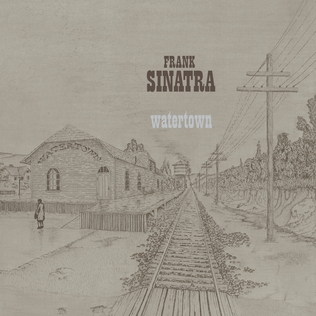 Watertown (1970)
Watertown (1970)
-
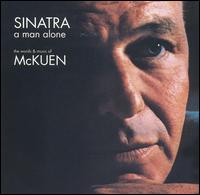 A Man Alone (1969)
A Man Alone (1969)
-
 My Way (1969)
My Way (1969)
-
 Francis A. & Edward K. (1968)
Francis A. & Edward K. (1968)
-
 Cycles (1968)
Cycles (1968)
-
 The Sinatra Family Wish You a Merry Christmas (1968)
The Sinatra Family Wish You a Merry Christmas (1968)
-
 Francis Albert Sinatra & Antonio Carlos Jobim (1967)
Francis Albert Sinatra & Antonio Carlos Jobim (1967)
-
 The World We Knew (1967)
The World We Knew (1967)
-
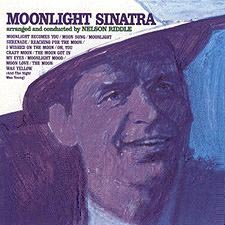 Moonlight Sinatra (1966)
Moonlight Sinatra (1966)
-
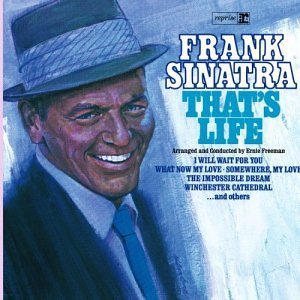 That’s Life (1966)
That’s Life (1966)
-
 Strangers in the Night (1966)
Strangers in the Night (1966)
-
 A Man and His Music (1965)
A Man and His Music (1965)
-
 September of My Years (1965)
September of My Years (1965)
-
 My Kind of Broadway (1965)
My Kind of Broadway (1965)
-
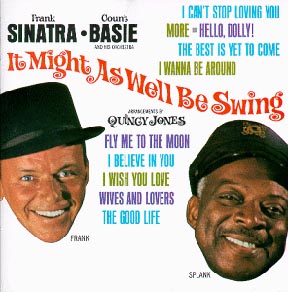 It Might as Well Be Swing (1964)
It Might as Well Be Swing (1964)
-
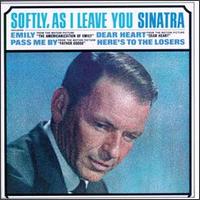 Softly, as I Leave You (1964)
Softly, as I Leave You (1964)
-
 Sinatra Sings Days of Wine and Roses, Moon River, and Other Academy Award Winners (1964)
Sinatra Sings Days of Wine and Roses, Moon River, and Other Academy Award Winners (1964)
-
 America, I Hear You Singing (1964)
America, I Hear You Singing (1964)
-
 12 Songs of Christmas (1964)
12 Songs of Christmas (1964)
-
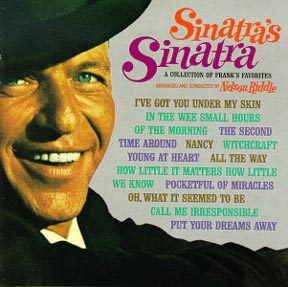 Sinatra’s Sinatra (1963)
Sinatra’s Sinatra (1963)
-
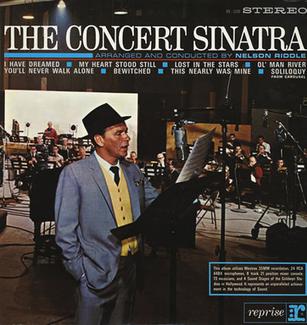 The Concert Sinatra (1963)
The Concert Sinatra (1963)
-
 Sinatra Sings Great Songs from Great Britain (1962)
Sinatra Sings Great Songs from Great Britain (1962)
-
 Sinatra and Swingin’ Brass (1962)
Sinatra and Swingin’ Brass (1962)
-
 Sinatra and Strings (1962)
Sinatra and Strings (1962)
-
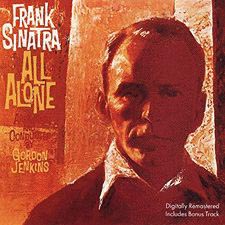 All Alone (1962)
All Alone (1962)
-
 Sinatra Basie: an historic music first (1962)
Sinatra Basie: an historic music first (1962)
-
 Point of No Return (1962)
Point of No Return (1962)
-
 Sinatra’s Swingin’ Session!!! (1961)
Sinatra’s Swingin’ Session!!! (1961)
-
 I Remember Tommy (1961)
I Remember Tommy (1961)
-
 Come Swing with Me! (1961)
Come Swing with Me! (1961)
-
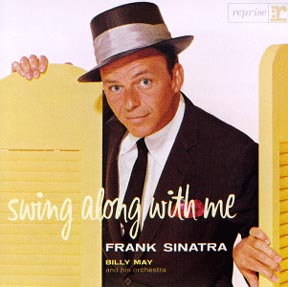 Swing Along With Me (1961)
Swing Along With Me (1961)
-
 Ring-a-Ding-Ding! (1961)
Ring-a-Ding-Ding! (1961)
-
 Nice ’n’ Easy (1960)
Nice ’n’ Easy (1960)
-
 Come Dance with Me! (1959)
Come Dance with Me! (1959)
-
 No One Cares (1959)
No One Cares (1959)
-
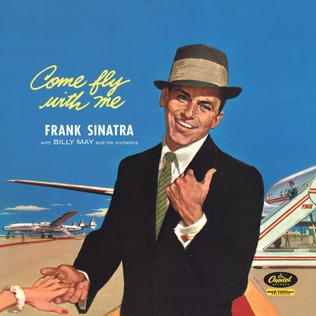 Come Fly with Me (1958)
Come Fly with Me (1958)
-
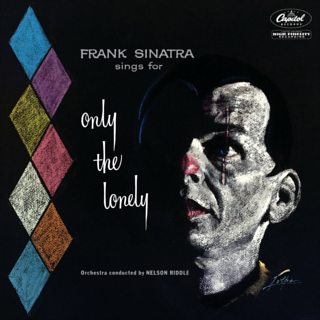 Frank Sinatra Sings for Only the Lonely (1958)
Frank Sinatra Sings for Only the Lonely (1958)
-
 Close to You (1957)
Close to You (1957)
-
 A Swingin’ Affair! (1957)
A Swingin’ Affair! (1957)
-
 A Jolly Christmas from Frank Sinatra (1957)
A Jolly Christmas from Frank Sinatra (1957)
-
 Where Are You? (1957)
Where Are You? (1957)
-
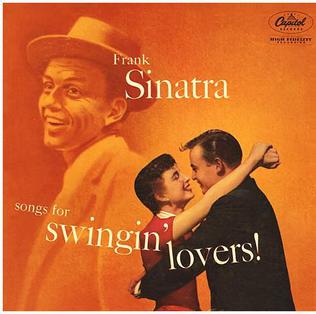 Songs for Swingin’ Lovers! (1956)
Songs for Swingin’ Lovers! (1956)
-
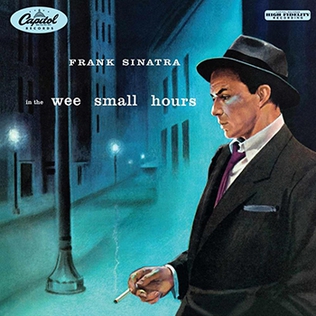 In the Wee Small Hours (1955)
In the Wee Small Hours (1955)
-
 Swing Easy! (1954)
Swing Easy! (1954)
-
 Songs for Young Lovers (1954)
Songs for Young Lovers (1954)
-
 Swing and Dance with Frank Sinatra (1950)
Swing and Dance with Frank Sinatra (1950)
-
 Dedicated to You (1950)
Dedicated to You (1950)
-
 Frankly Sentimental (1949)
Frankly Sentimental (1949)
-
 Christmas Songs by Sinatra (1948)
Christmas Songs by Sinatra (1948)
-
 Songs by Sinatra (1947)
Songs by Sinatra (1947)
-
 The Voice of Frank Sinatra (1946)
The Voice of Frank Sinatra (1946)